If you’re looking for things to do in San Pedro de Atacama and the surrounding Atacama Desert, these are the things to do in the Atacama Desert you shouldn’t miss…
Everything was stiller than I’d ever thought possible. I’d watched as the park had emptied out and the tour buses had left one by one until we were the only people left in a vast, wide-open landscapes of Chile’s Atacama Desert.
It was like someone had flicked a switch. One moment, there were people milling about the lake taking pictures and huddled in small groups. The next, we were alone.
As it grew quieter, landscape of the surrounding 1,200 square mile Atacama salt flat felt larger and larger.
Welcome to the Atacama Desert: the land of wide-open landscapes and vast panoramas, of silence and of stars in the north of Chile. If it’s not on the top of your South America bucket list, it should be.
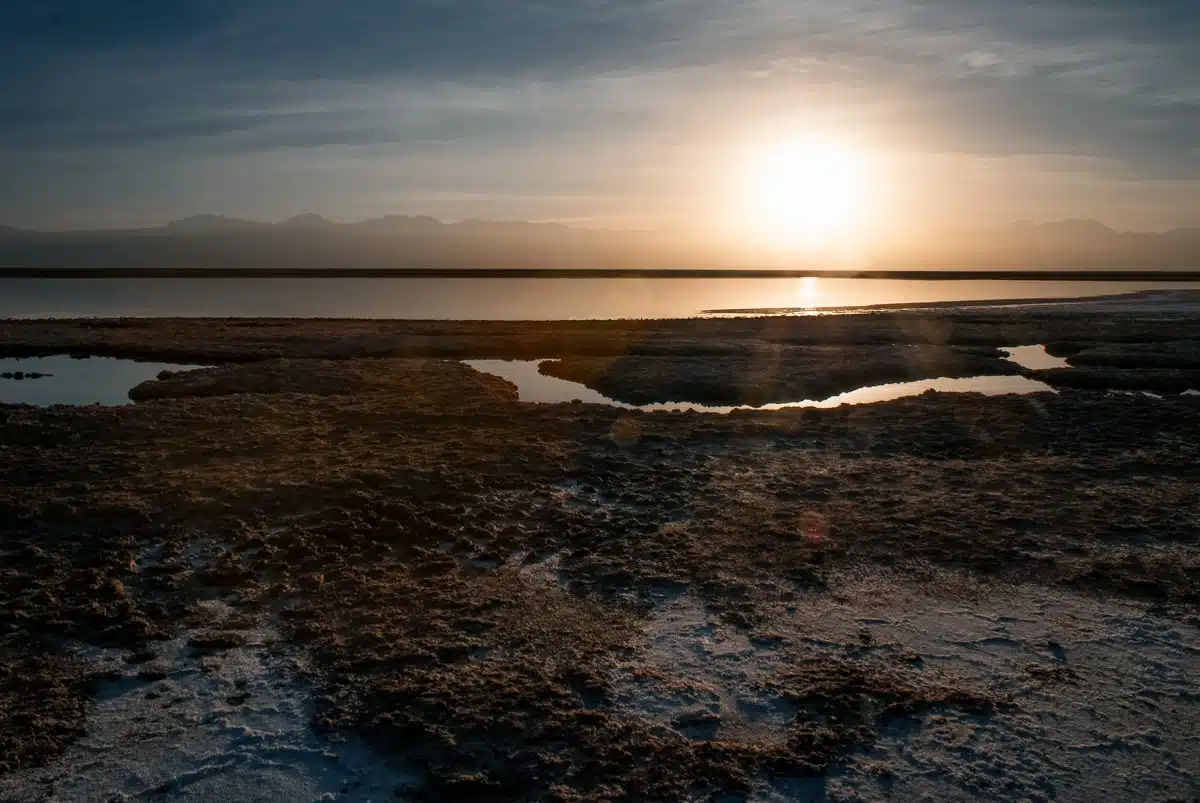
Few who visit fail to be impressed by the scenery, but few also get to experience the truly solitary nature of the area thanks to the predominance of large tour groups organising excursions from the region’s hub, San Pedro de Atacama.
I’d met a Chilean on the road a few weeks before and had told him of my plans to travel to the region, asking for him for recommendations for things to do in and around San Pedro de Atacama.
Rather than give me a list of places to visit, he’d surprised me with a completely different answer.
“If you go to the Atacama Desert, you should hire a car or a camper and strike off on your own. It’s a completely different world,” he’d advised. “Most people stay in San Pedro de Atacama [the region’s hub]and go on tours. Doing it on your own is much better. You aren’t distracted by anything but your surroundings.”
Maybe it was the authority of his tone, but on the back of that two-minute conversation, my partner and I hired a campervan, picked up the keys and set off from San Pedro de Atacama into the world’s driest desert.
That is how I found myself in the middle of the Atacama’s largest salt flat (the Salar de Atacama) as the sky darkened around us without a soul in sight.
The Best Things to do in the Atacama Desert
Laguna Tebinquinche
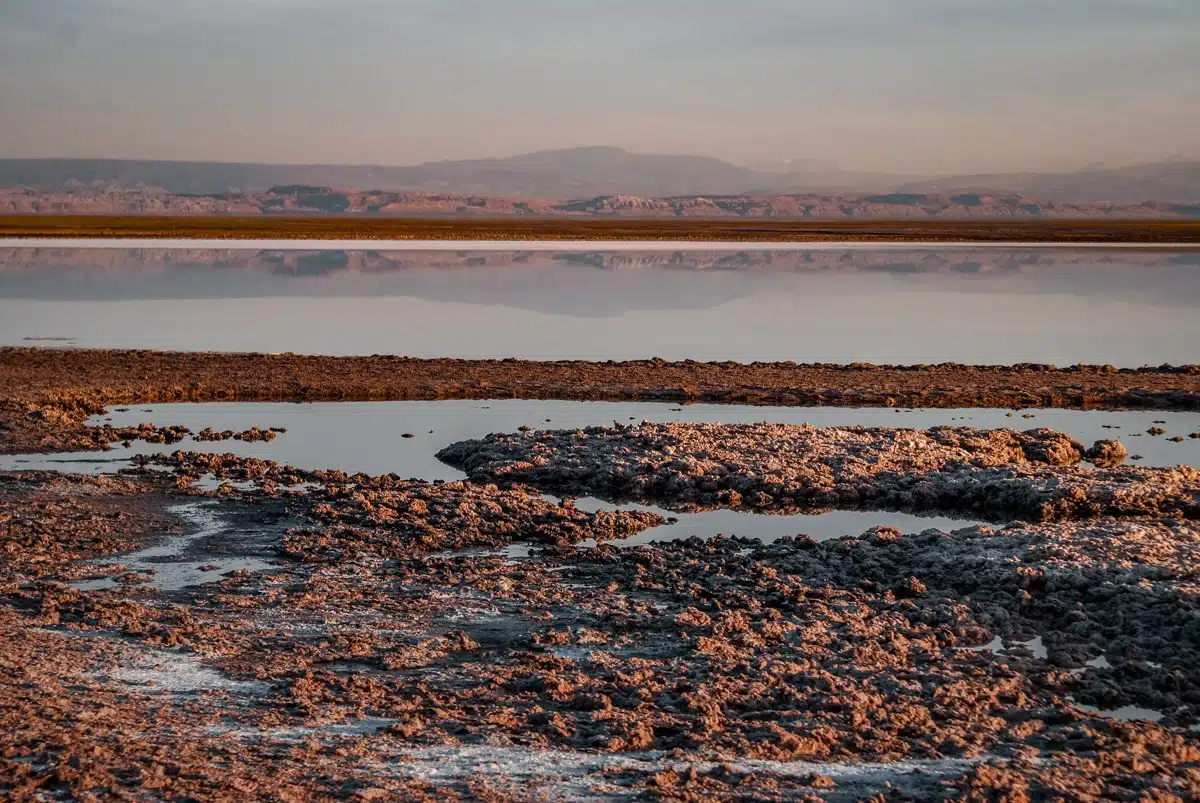
Sitting on the banks of Laguna Tebinquinche, a large saltwater lake 70 miles away from San Pedro, I started to appreciate what the Chilean had meant about quietness.
One by one, the stars and planets started to appear in the night sky, dotting the inky darkness with varying degrees of brightness until it was impossible to believe that the scenery in front of us was real.
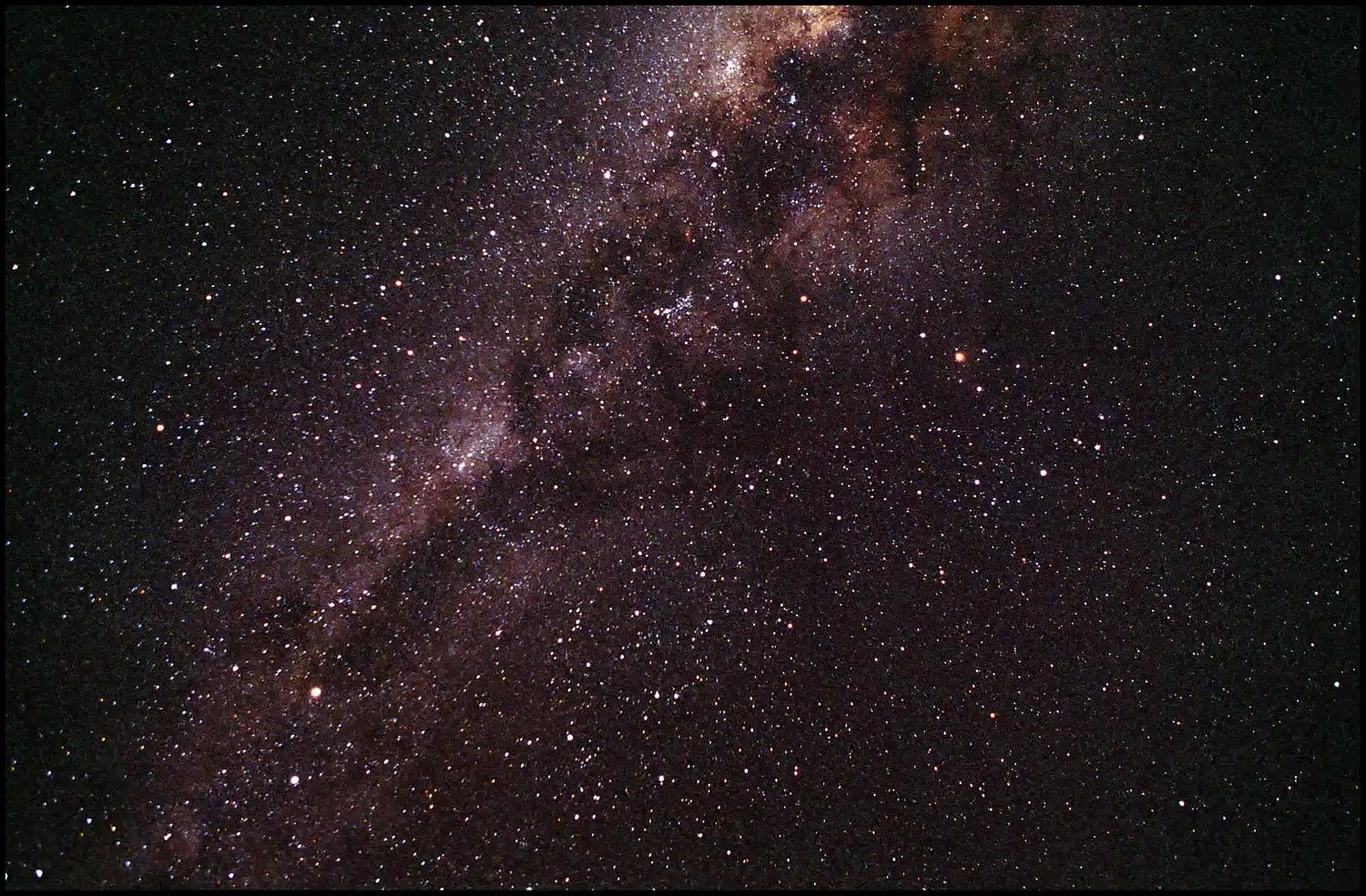
There are lots of options and operators to choose from when it comes to exploring the Atacama’s night skies. I sat down with my glass of wine, charting the constellations in front of me, and reflected that sometimes the simplest option can provide the best experience.
It’s no wonder that the Atacama constantly tops the list as the best stargazing spot in the world.
Laguna Chaxa
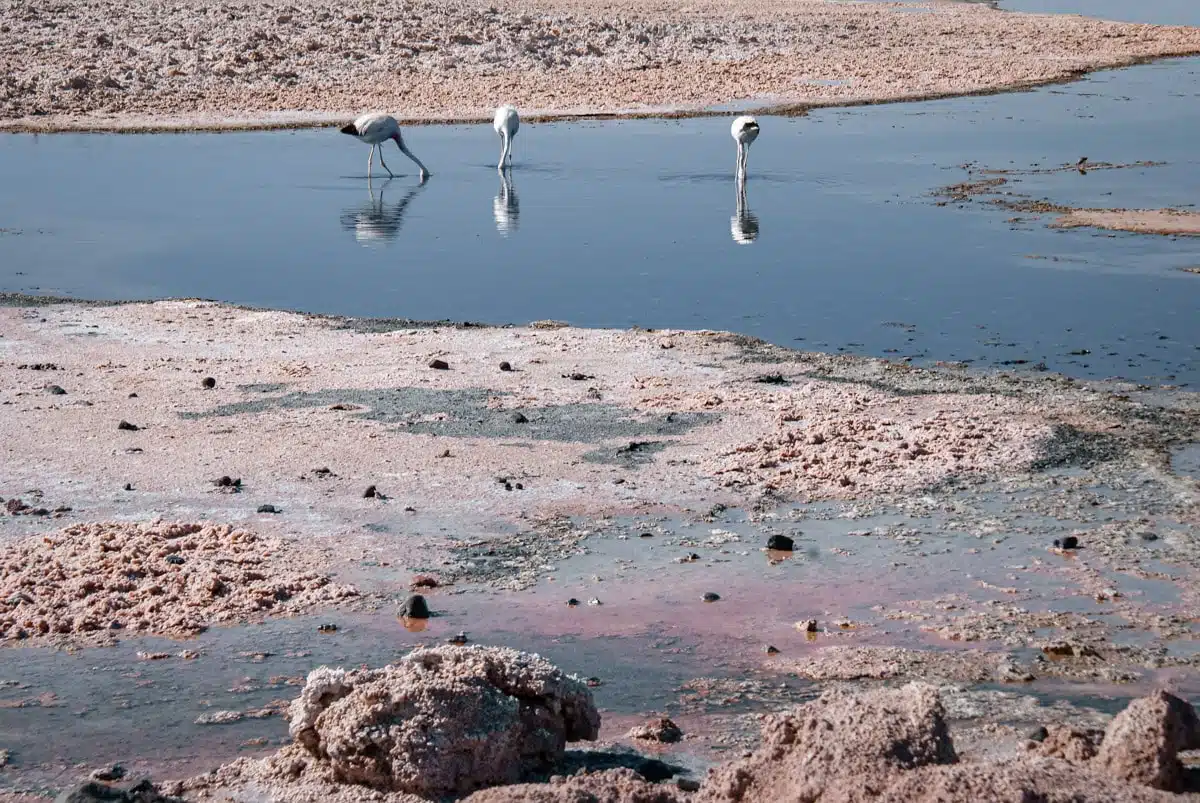
We stopped off at Laguna Chaxa bright and early. Chaxa is best known for the three species of flamingos (James, Chilean and Andean) that frequent its waters.
The lake itself was vast. It forms part of a water system known as the “Soncor Sector” all of which is protected as a national reserve.
On the face of it, Chaxa was still as death, excepting the flamingos ranging over its surface with their weirdly-stilted and uncoordinated walk.
Look a little closer and you could see the millions of small algae and invertebrate on which the flamingos fed teeming in the waters. Away from the lake, the salt had created a pale-white rocky landscape through which a path was cut.
We walked along the path, flanked on either side by small saline pools around which the flamingos would gather until you got too close for comfort. They’d then stalk away or fly to the next pool, intent on continuing their never-ending feeding routine.
Salar de Capur, Salar de Talar and the Piedras Rojas
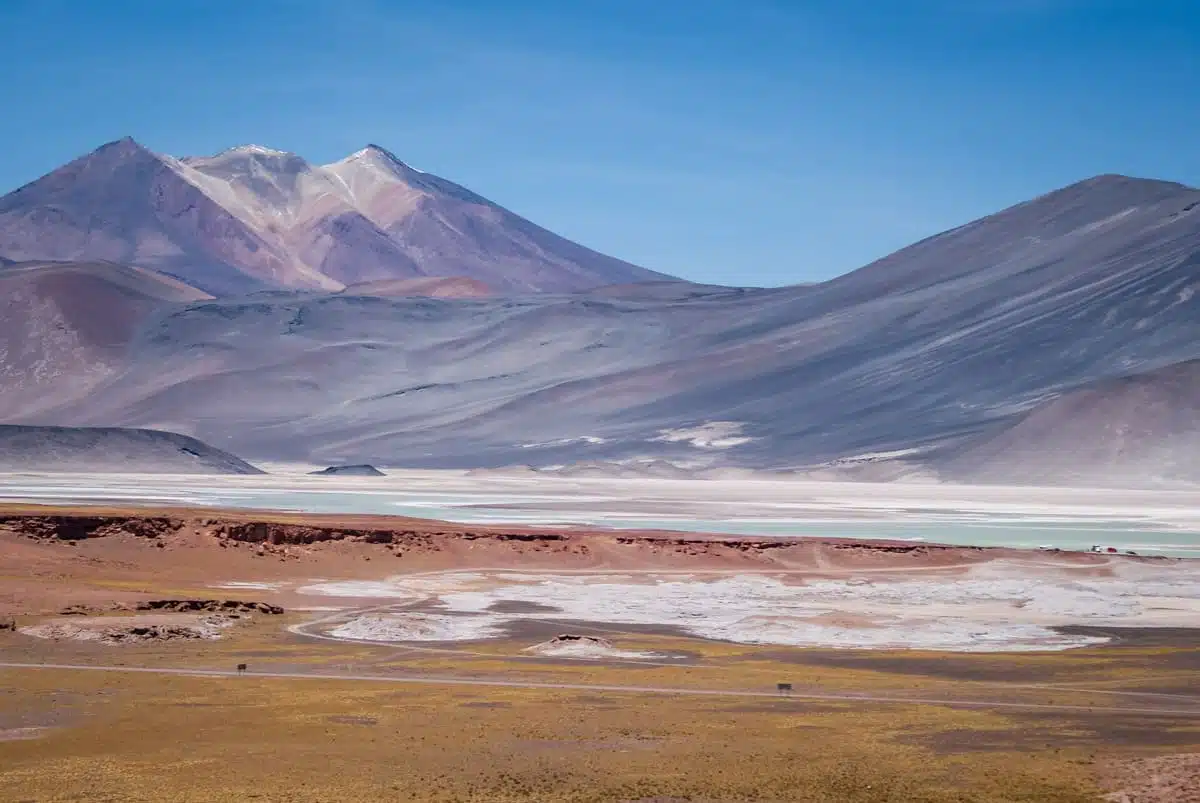
Our destinations for the drive were two lesser-visited high altitude lakes, the Salar de Capur and Salar de Talar, both accessed on a small road that eventually leads to Argentina.
We bumped our way up, metre by metre, as the landscape changed from the pale hues of the salt plains to dull red volcanic earth, spotted with tufts of hardy, bright yellow grass and thorny flowers.
Hikes are made more difficult by the altitude, but even the shortest come with picturesque panoramas. The
By this point, we were at an altitude of 4,000 metres. The
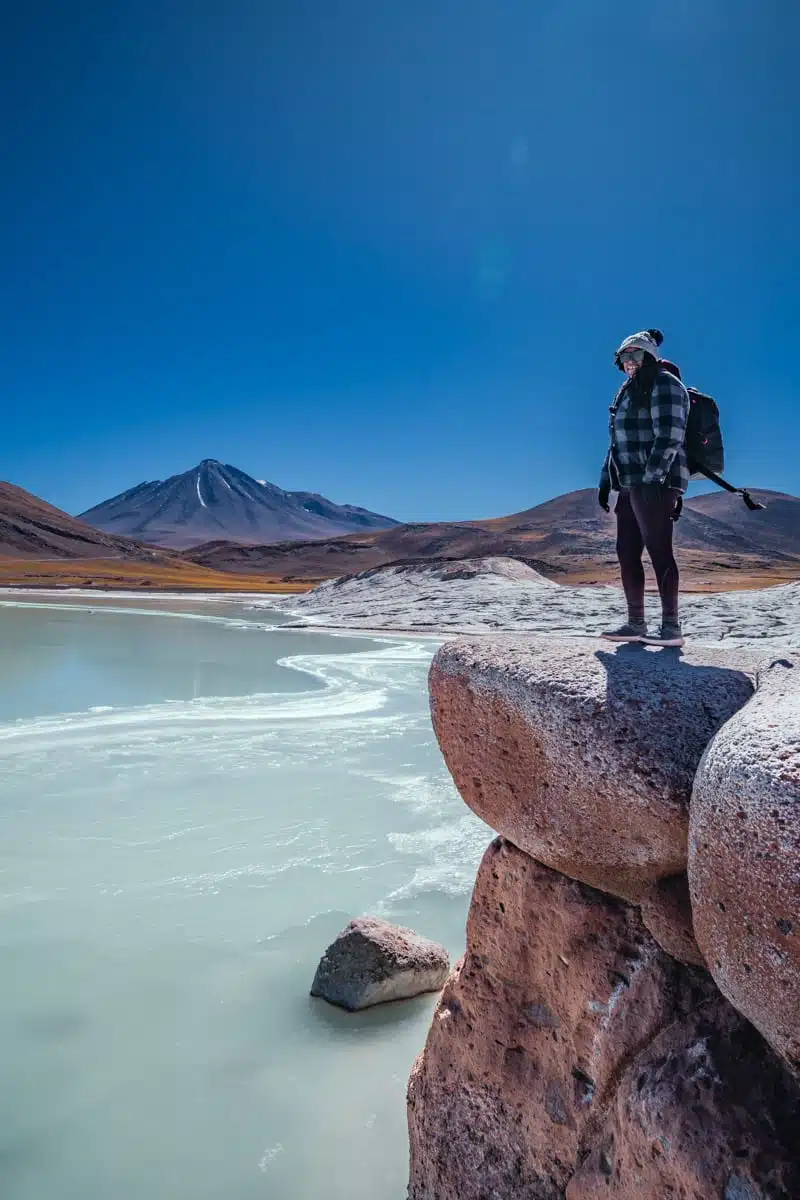
Scrambling over uneven ground and large rocks becomes significantly more strenuous when you find it hard to breathe even when you’re standing still.
“Walk up like an old man and you’ll be able to come down like a young bull. Spring up like a young bull and you will come down like an ancient
All of a sudden Karen’s advice about the hike made sense.
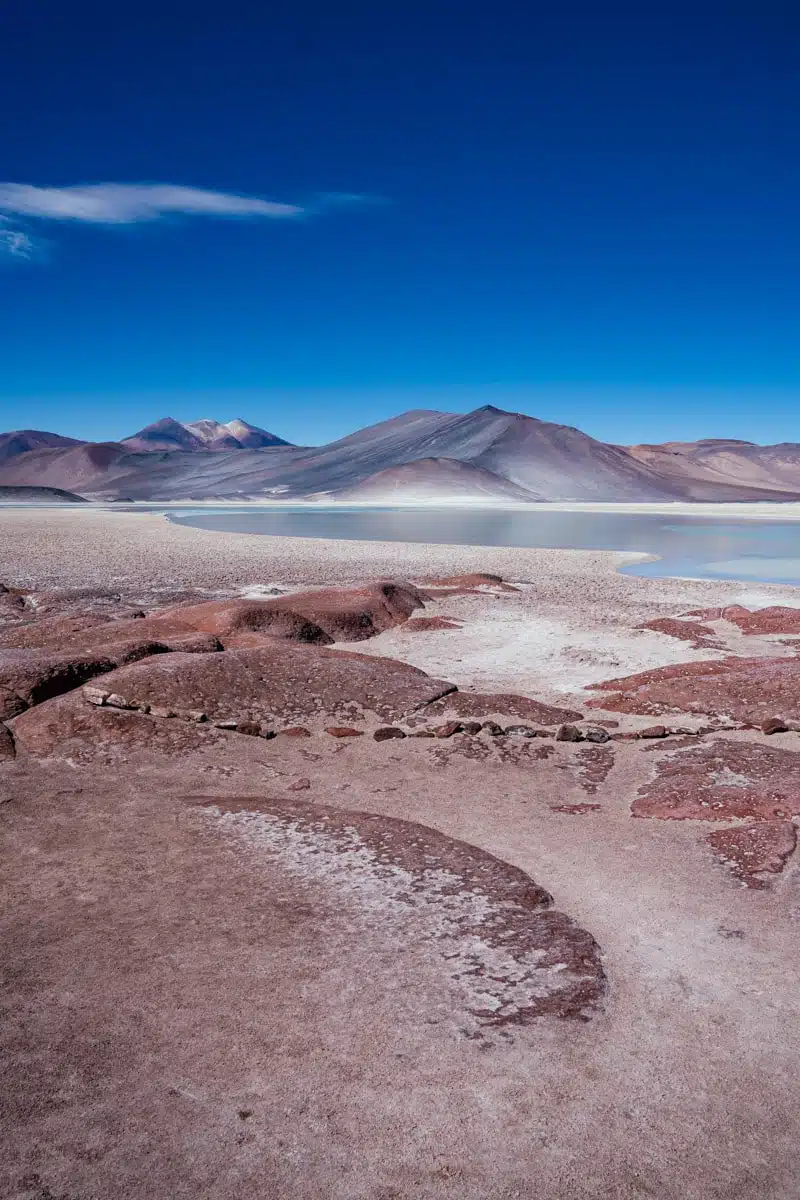
Still, it was worth it for the spectacular views across the lake. From our viewpoint on the piedras, the lake’s luminous pale green waters were edged with a pale-pink salt crust, itself flanked by ice-tipped purple volcanos behind.
Salar de Pujsas, Tara and Quisquiro
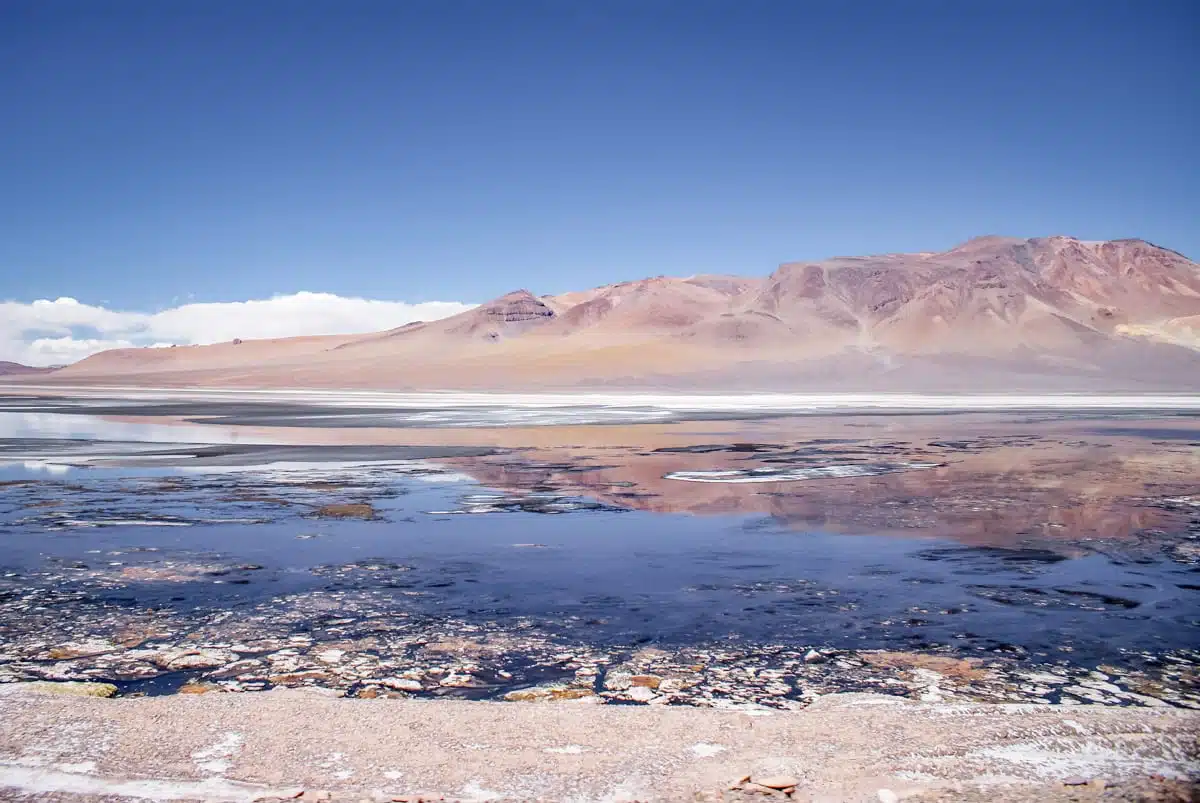
Any road trip covering a large area (in total, the Atacama region spans over 41,000 square miles) is always one-half excitement as you reach each new destination, one half easygoing chat, numb posteriors and tapping to music as you drive your way between them.
Sure, there are plenty of things to do in San Pedro de Atacama and the Atacama Desert but much of pleasure of exploring the region is just seeing another unbelievable landscape unfold as you turn a new bend on the road.
During the course of the week, we drove around 1,000 miles in Bruno, the name we’d given to our brightly-coloured campervan.
The altitude added its own dimension of strangeness to the trip. At one point while driving at 4,900 metres I had the vague feeling that I might be dreaming.
I wasn’t, I was in fact trying to negotiate a road inhabited by truckers hell bent on taking every slope and turn at the greatest possible speed. Taking frequent rest breaks is advisable.
We set off to the east of the Atacama to visit the
While we only saw one other non-commercial vehicle that day, the route was popular with truck drivers transporting goods between Chile and Argentina.
Quisquiro was the largest of the three
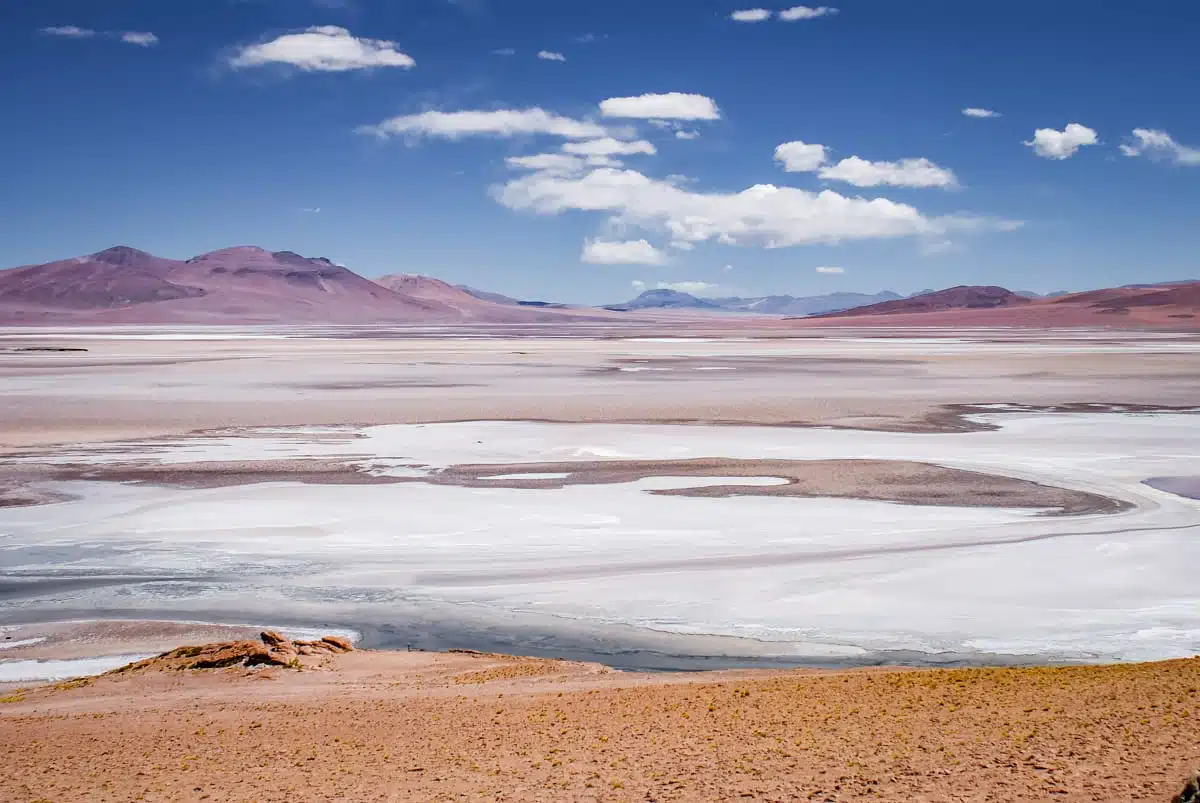
The view kept on unfurling in front of us, to the point where it was impossible to take it all in at the same time. Quisquiro was a rainbow of deep azure blues, dotted with clouds of white and crimson reds – a perfect reflection of the surrounding scenery.
Climbing down from the road, everything else disappeared, swallowed by the unending
On the way back, we passed a signpost pointing to the turnoff for Bolivia. Seconds later, I looked over and caught a glimpse of the vibrant colours of Laguna Verde peeking through the volcanos.
Laguna Verde was without a doubt one of the highlights of my road trip from Tupiza to the Salar de Uyuni in Bolivia last year. Seeing it from above was an unexpected pleasure.
Stargazing in the Cordillera de Sal
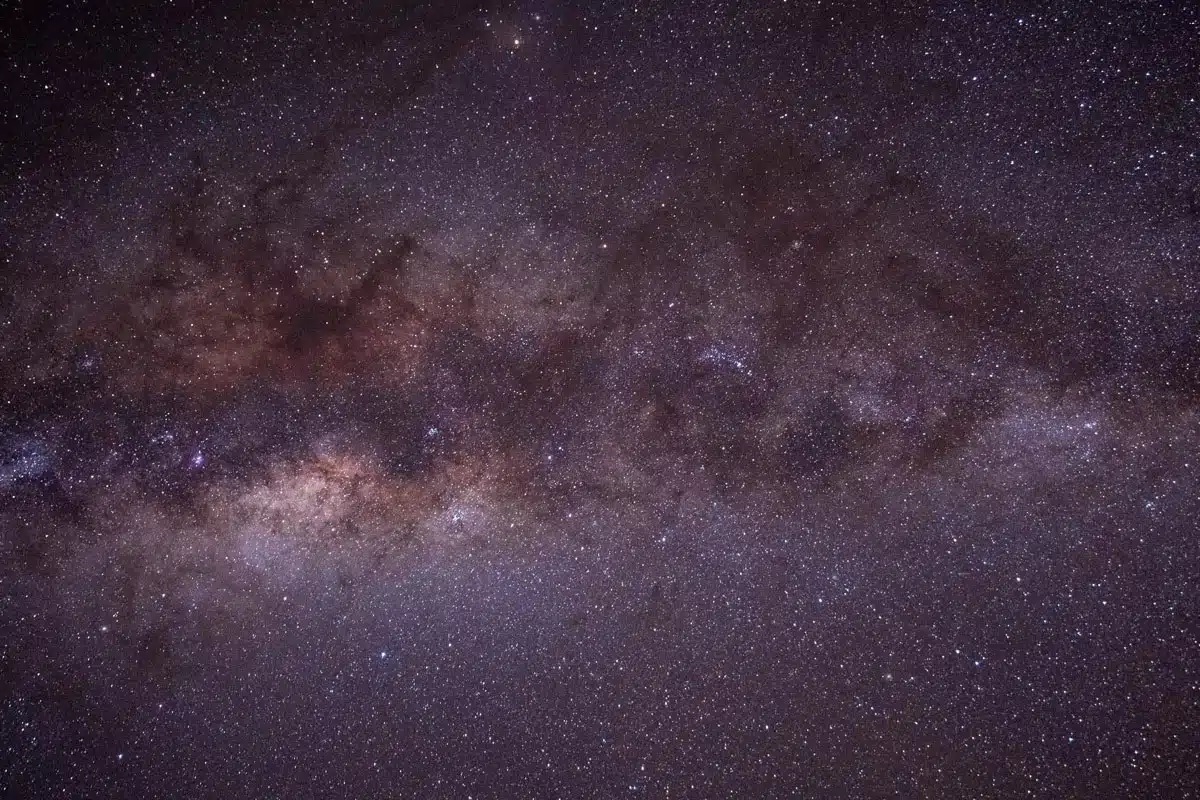
Driving back down into the valley of the Salar de Atacama and up out of the other side, we found a spot that was miles away from the main road and pulled up in the shadow of the
There was no one around, no noise, no cars and the stars came out in full force before being eclipsed by rising moon around midnight.
I’ll admit that sitting in the shadow of the
It was like we’d discovered a new planet – despite the fact that we were less than half an hour from San Pedro de Atacama.
Valle de La Luna
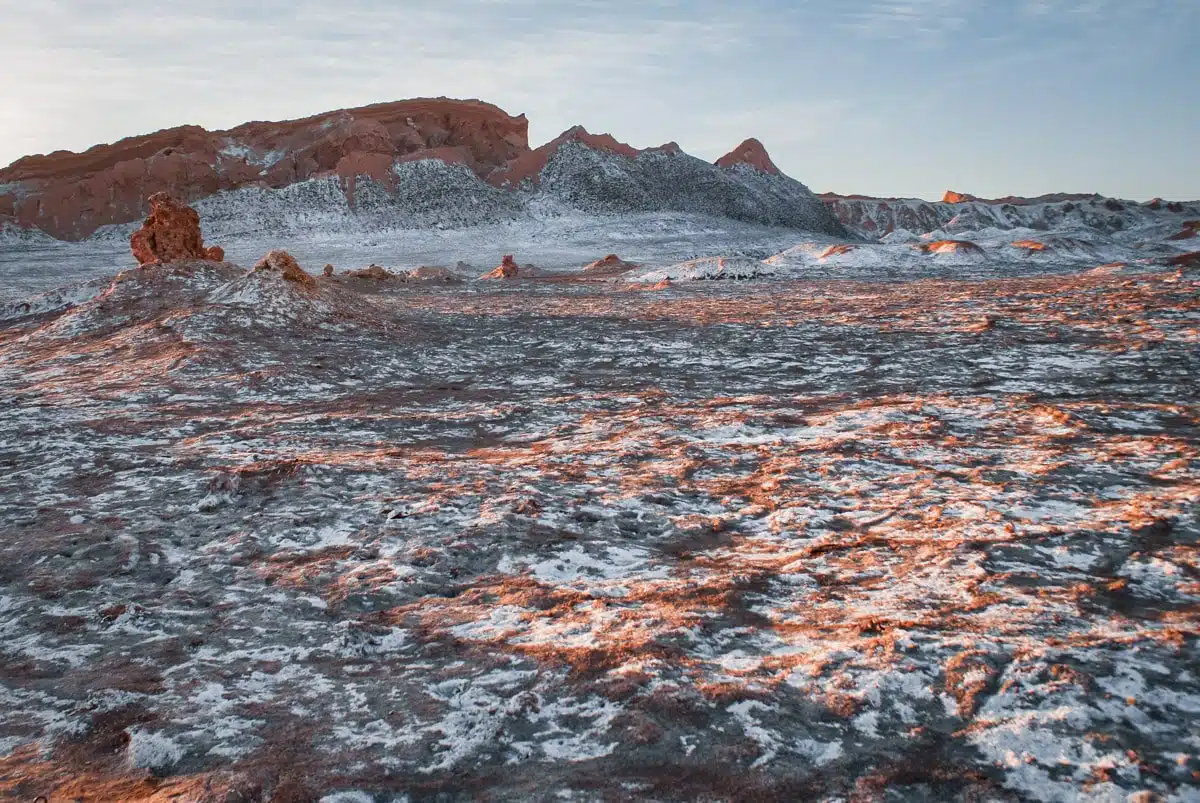
We couldn’t miss the Valle de la Luna, one of the Atacama’s “big” attractions.
Ask anyone what they’d say are the best things to do in the Atacama Desert and nine times out of ten they will list the Valle de la Luna. It’s very much on the tour bus trail. Or so we thought.
Going to the Valle for sunrise rather than sunset meant that we paid the fee, breezed through the entrance and found ourselves completely alone.
Thanks to a slightly later than anticipated start, we entered the park just as the dawn began to cast its light through the eerie shapes and weird rock formations of the park. By the time we’d parked up and wandered around, it was getting lighter and lighter by the second.
We watched the sun rise and bathe the valley in its warm hues and I realised how thankful I was that we’d decided to hire the van. It had meant the freedom to explore little-known places and to enjoy solitude even in the busier ones.
Sunrise at El Tatio Geysers
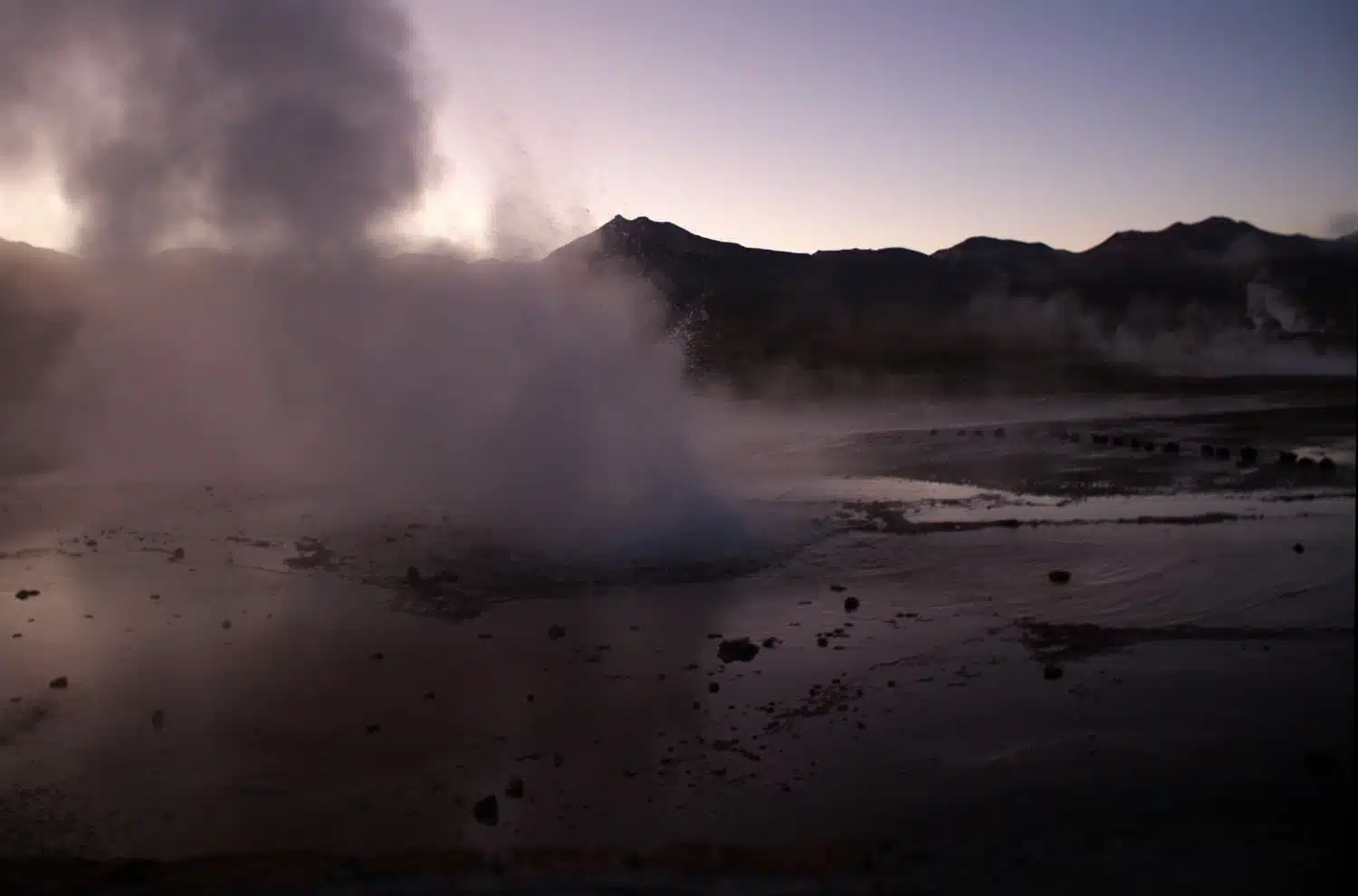
It was nearly time for us to leave, but we couldn’t go without seeing the Tatio geyser field. El Tatio is an impressive sight, even by the Atacama’s standards. It’s the biggest geyser field in the southern hemisphere with over 80 active geysers spread out within its radius.
The geysers are most active at sunrise, so going to see them meant waking up and getting on the road at 3.30am for the two-hour drive. El Tatio is 55 miles from San Pedro de Atacama, but we’d spent the night in a small hamlet called Guatin, 13 miles along the road to shorten the morning’s trip.
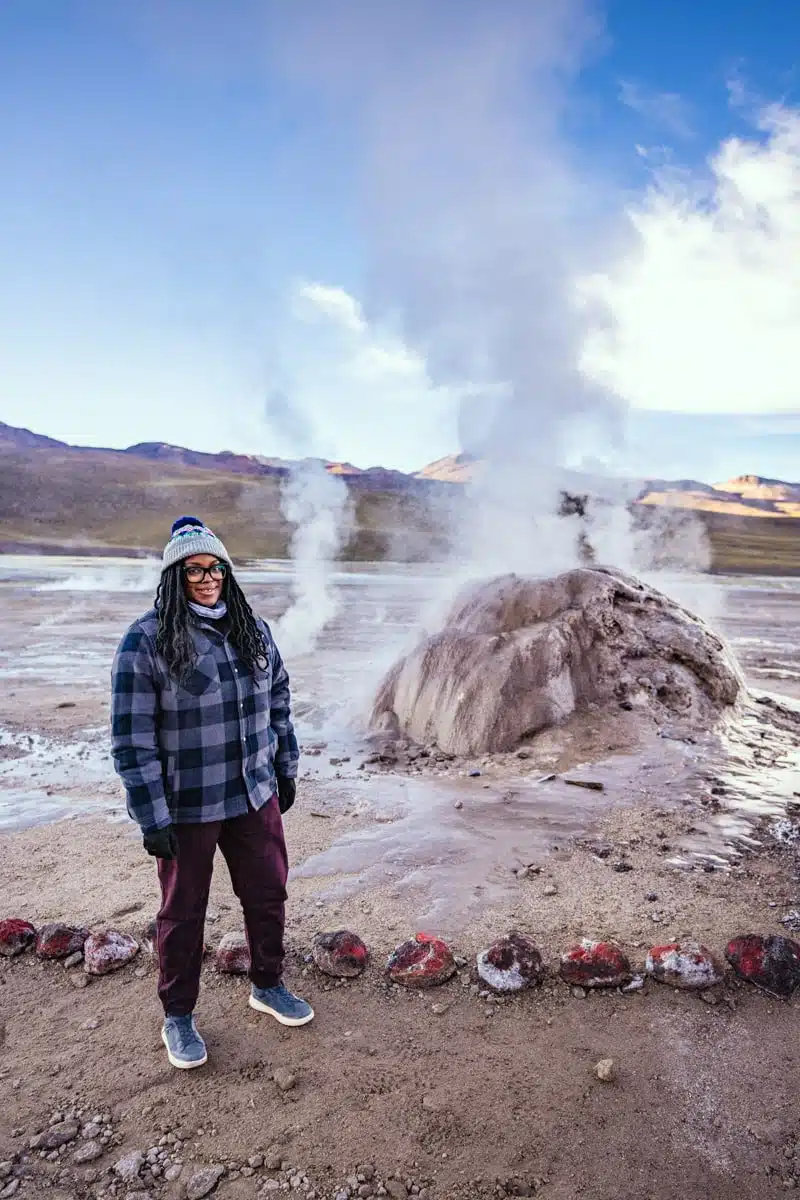
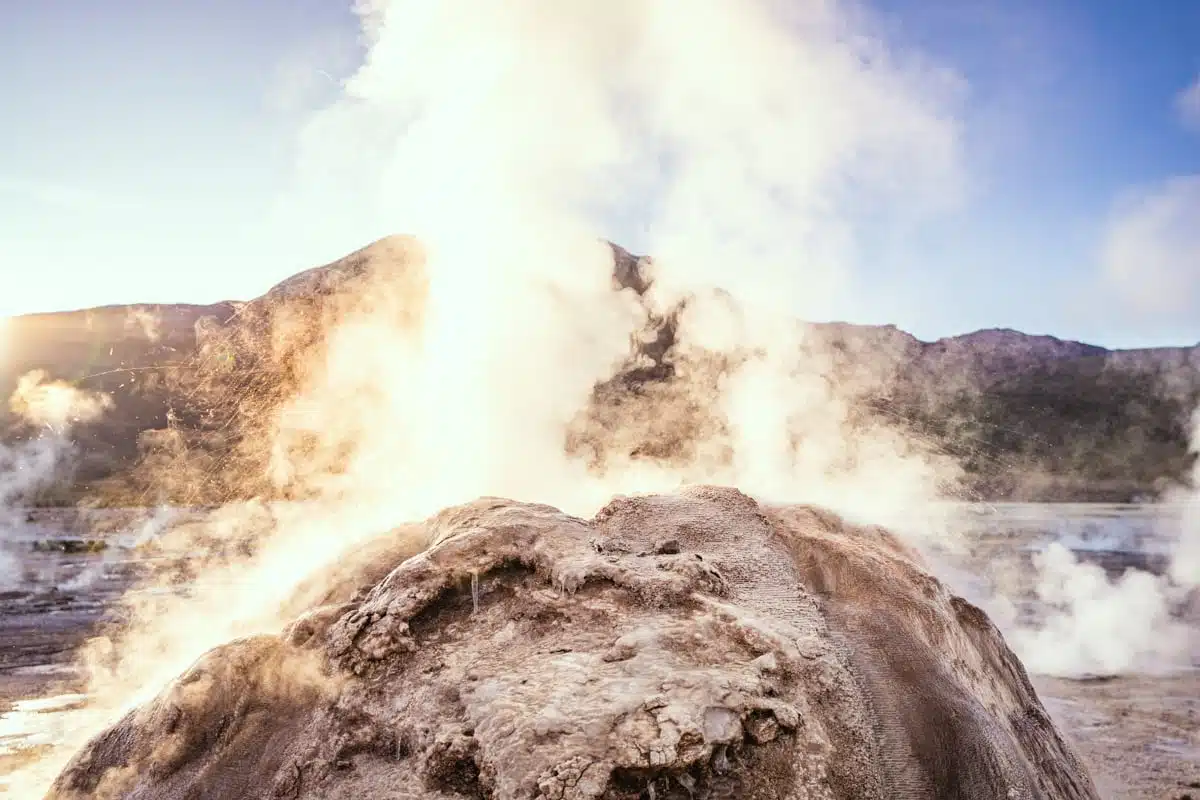
After being off-grid for a week, it was strange to be surrounded by people, each on their own Atacama adventure all trying to get as close to the geysers as possible while they started to bubble and boil.
Even the crowds couldn’t detract from the slightly ethereal sight of 80 geysers erupting, hissing and steaming across my line of vision.
Hiking in Guatin Canyon
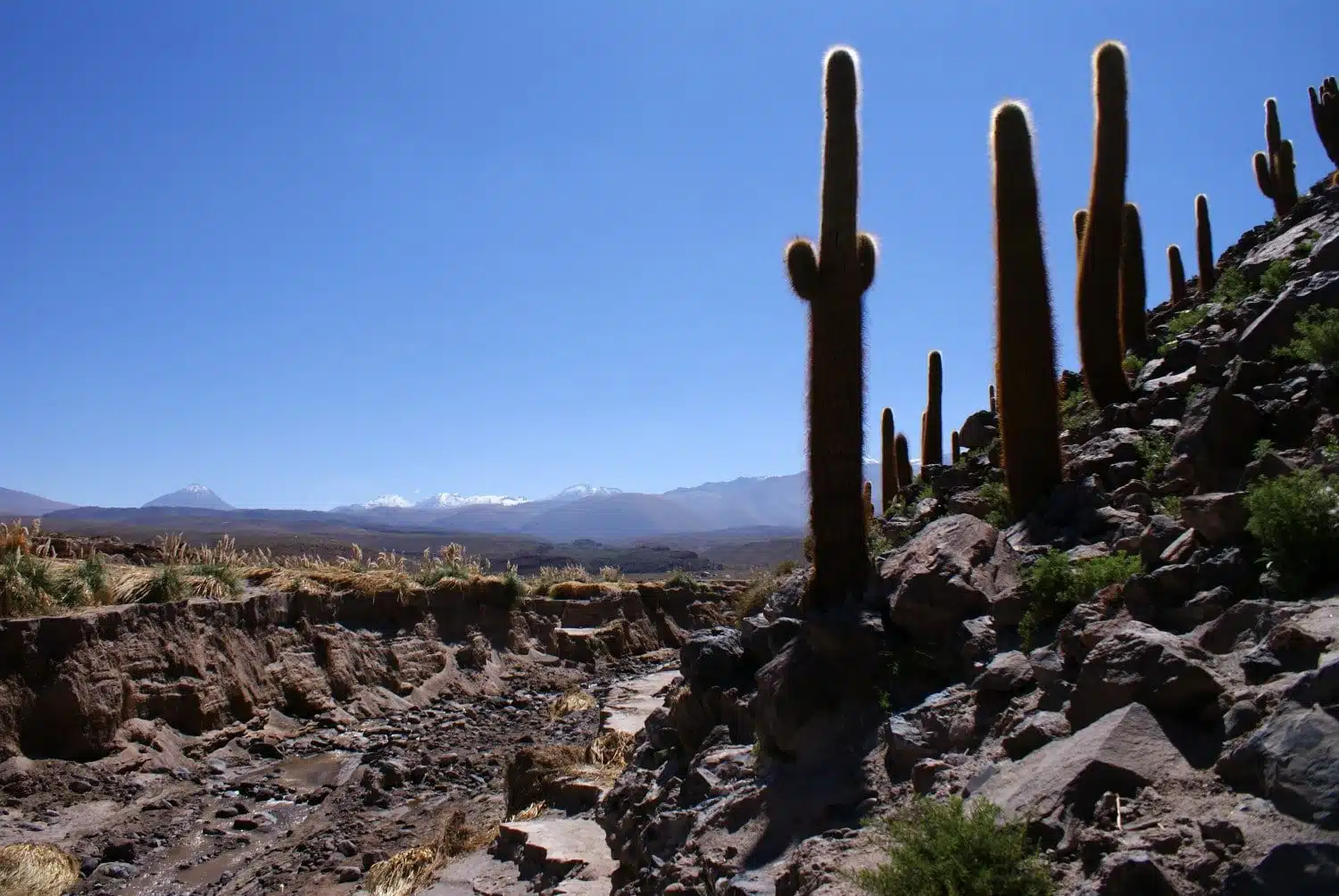
We spent some time at the geysers after the tour buses had set off, but the magic was gone. They quietened to a gurgle once the sun had fully risen, so we drove back down the road to San Pedro.
By the time we made our slow descent to Guatin, the small hamlet where we’d camped the night before, we were silenced. The trip was coming to an end, but we did have time for one last hike into the Guatin Canyon.
The Guatin Valley is distinguished by the spectacularly large candleabra cacti that line its sides. As we hiked into the canyon, we were soon surrounded by the towering cacti, pampas and vegetation supported by the river.
It is a peaceful hike, we made our way along the riverbed unobserved and undisturbed, forgetting that there was an outside world to rejoin. It was just us, crunching and crackling our way through the river’s floor and savouring our escape from reality, temporary as it was.
Things to do in San Pedro de Atacama
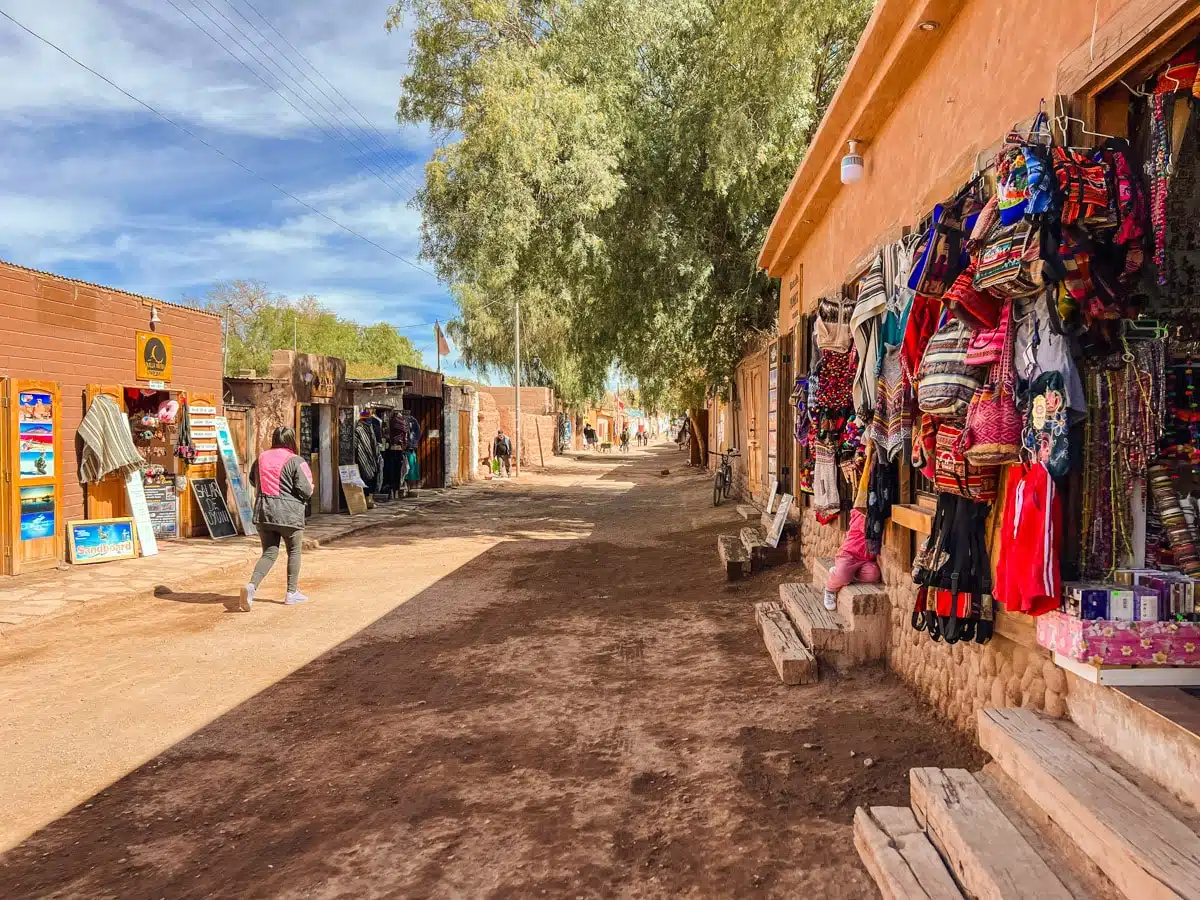
While we spent a lot of time with the campervan, we also spent a few days in San Pedro de Atacama before and after the trip. Here are my recommendations for things to do in San Pedro de Atacama itself.
- Museo Gustavo Le Paige – an impressive museum that’s brimming with archaeological finds, as well as anthropological exhibits that walk you through the history and culture of local life over the years.
- Iglesia San Pedro – it’s not going to stop you in your tracks but the cute Iglesia San Pedro is one of San Pedro’s oldest buildings – it dates back to the 17th century.
- Tierra Atacama Hotel & Spa – it might be the middle of the desert but that doesn’t mean you can’t have a blow-out stay. A short distance outside of San Pedro itself, Tierra is undoubtedly the place to stay if you are able to splash some cash.
- La Casona – The food at La Casona is the best in town. Go hungry and prepare to fill up on Chilean staples such as pastel de choclo. Prepare to wait during busy times.
Check out my Atacama Desert Guides
- The San Pedro de Atacama Travel Guide
- Why You Need to Visit El Tatio Geysers
- How to Visit Lagunas Miscanti & Miniques
- Hotel Desertica – The Best Place to Stay in San Pedro
- 3 Day Atacama Itinerary
- Visiting the Atacama? Use This Handy Map
Love This? Save and Share on Pinterest
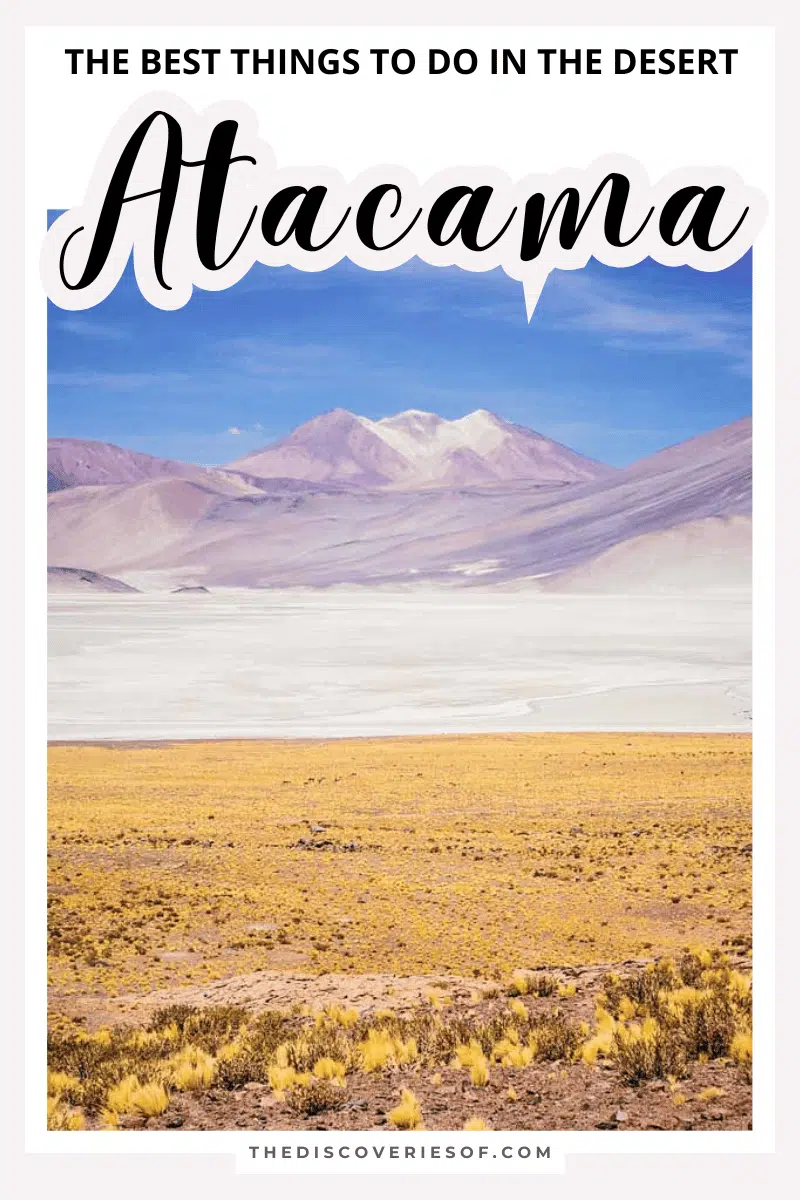
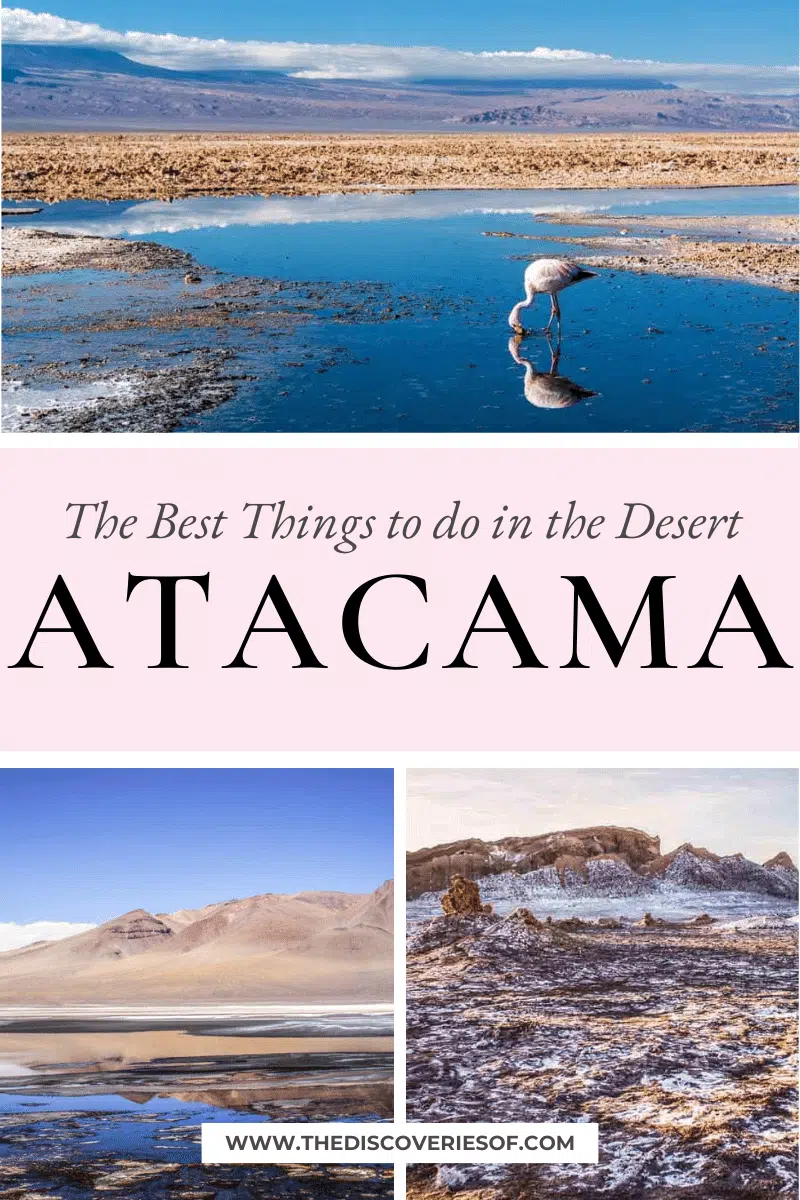

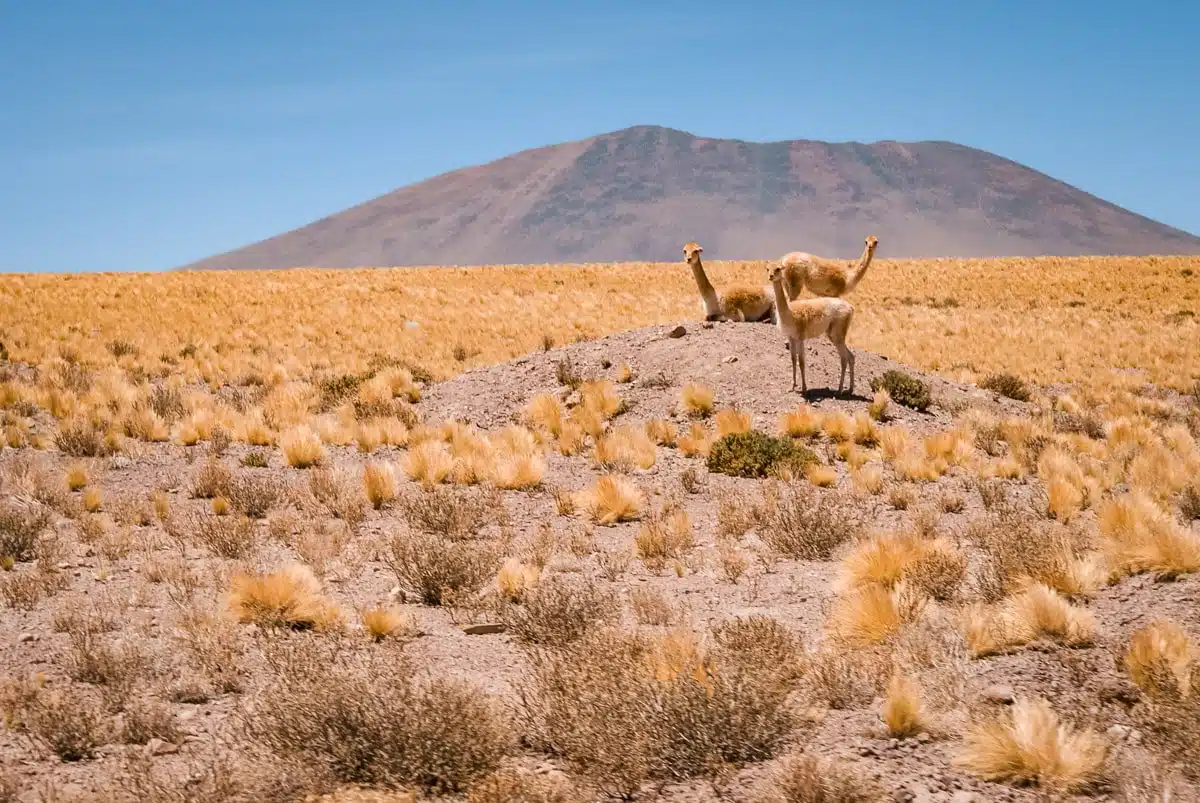
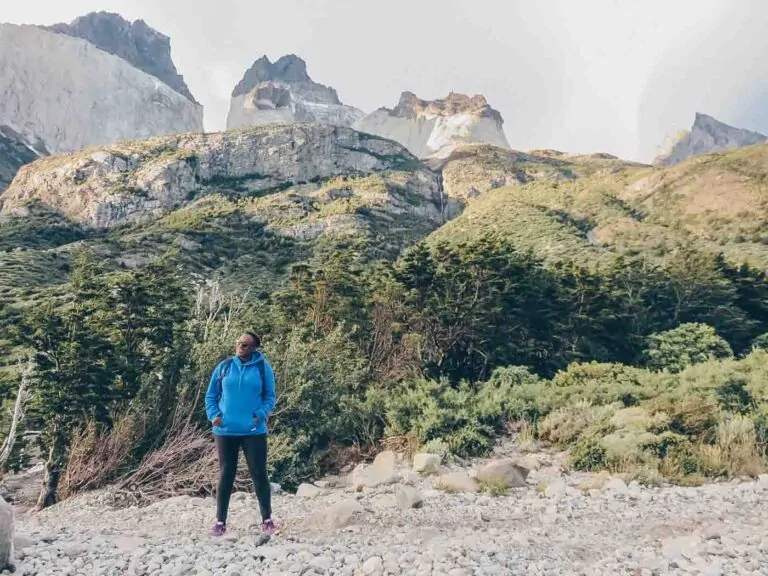
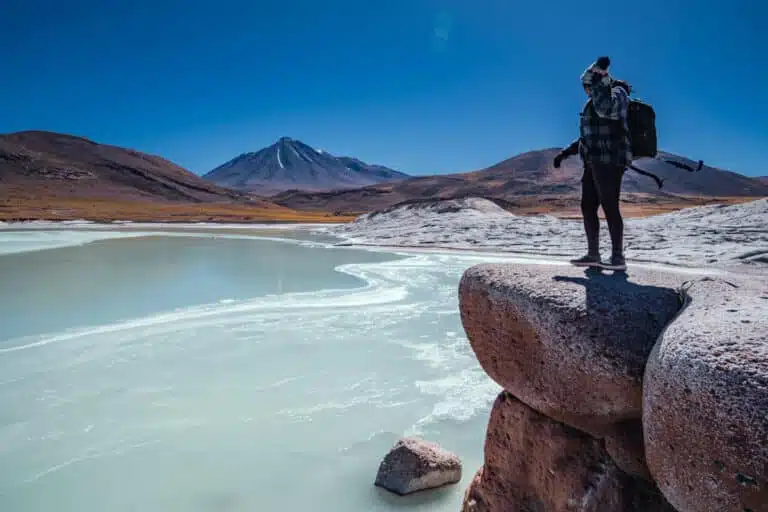
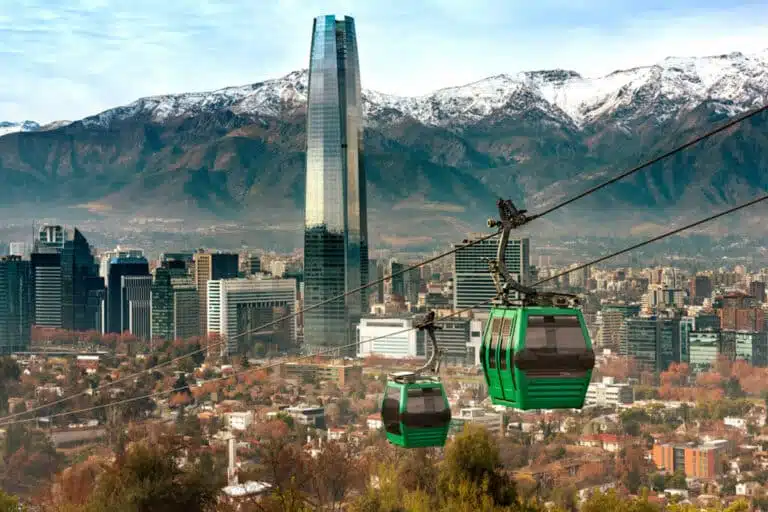
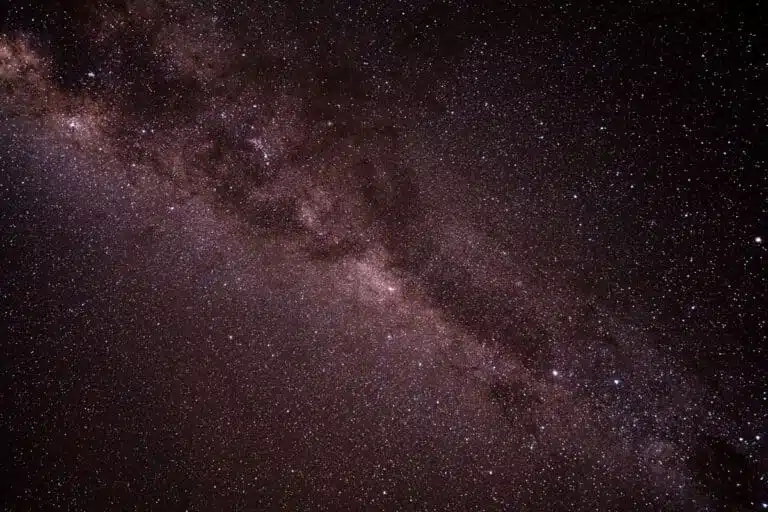

Oh no! I wish I spent more time exploring the Atacama desert when I was there! These look amazing! I remember I was so tired and exhausted from my trip around Uyuni and since I was already 4 months into my trip of 6 months in South America, I thought that the Atacama desert would be the same as the ones I saw in Uyuni, so I spent my days only hanging out in San Pedro and didn’t get to explore the landscapes around it. 🙁
That’s a shame Pete – to be honest, it took me 5 years from my first visit to Uyuni to make it over the other side to the Atacama! It’s definitely worth a separate trip of its own – I only hope that you get to make it and see its beauty for yourself 🙂
The ethereality is mind blowing. And your writing is so vivid! Thanks for sharing.
Thank you Davida – it’s one of the most incredible places I’ve ever travelled to. Absolutely stunning.